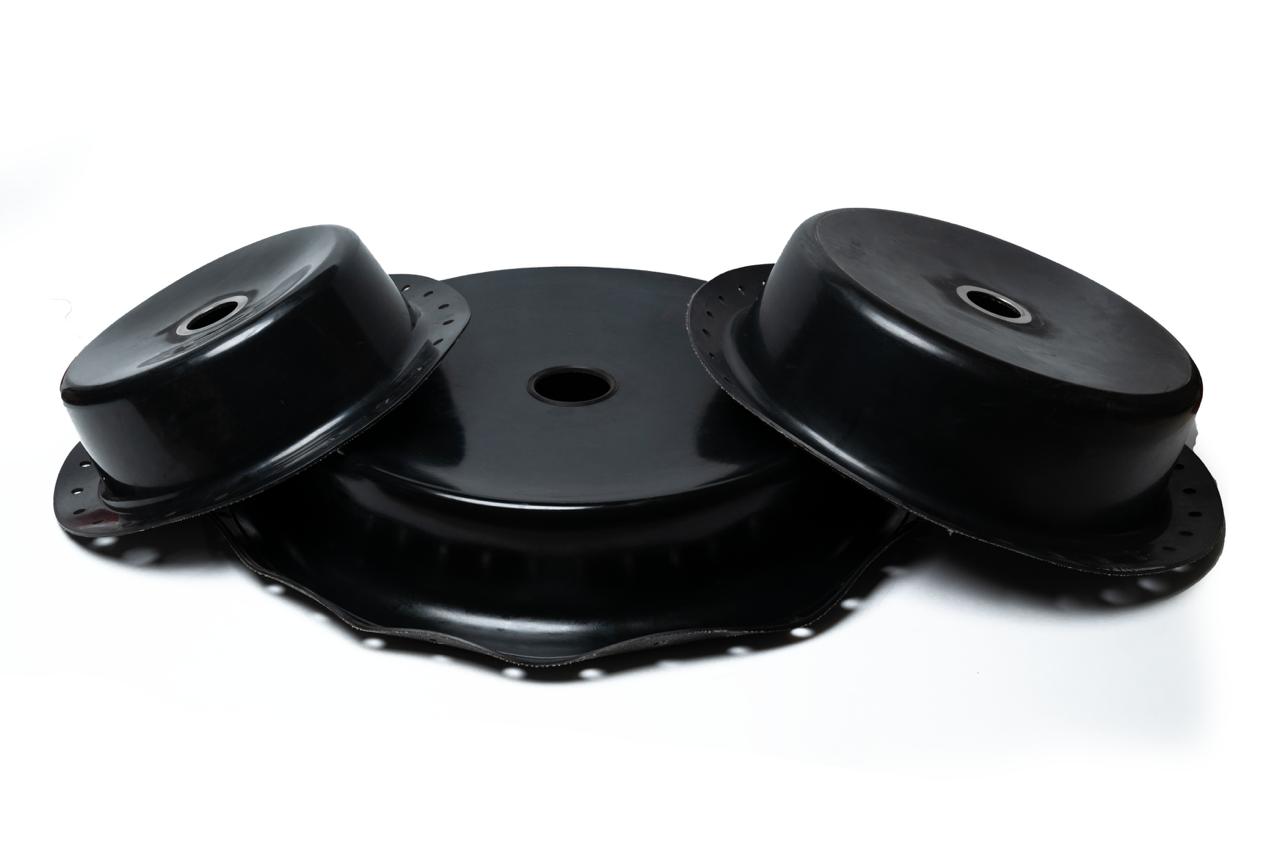
Wespo Rubber Diaphragms
In the pharmaceutical industry, it is very important that sterility and precise control over fluid handling processes be maintained. Fabric reinforced rubber diaphragms and silicone rubber diaphragms are the most common types of Wespo rubber diaphragms used in different pharmaceutical applications to ensure safety, reliability and compliance with strict industry standards.
Case Study of Rubber Diaphragm Application in Pharma Industries
Company:
A leading pharmaceutical company producing sterile injectable drugs.The company was experiencing contamination problems as well as inconsistent dosing in their fluid handling systems thus affecting product quality and regulatory compliance.
To mitigate the problem, the organization adopted high-quality Wespo rubber diaphragms for pumps, valves, and actuators such as silicone rubber diaphragms and fabric-reinforced diaphragms which acted as a good barrier against contamination while maintaining accurate fluid transfer.
How Wespo Rubber Diaphragm helps to improve the output?
Improved Sterility: The use of these kinds of diaphragm ensured no contact between process fluids and actuator or other internal components thereby guaranteeing sterility.
Enhanced Precision: These devices could make precision measurements by accurately responding to changes in pressure.
Regulatory Compliance: The resulting products were safe because their production complied with the set regulations through using high-quality rubber diaphragms.
Final Readings
Contamination issues have been effectively addressed and accurate liquid control has been achieved by adopting rubber diaphragms into the pharmaceutical industry. Advanced technology on the other hand can help companies greatly improve their overall efficiency while at the same time enabling them to meet various industry guidelines.
Most Frequently Asked Questions (FAQs) on Rubber Diaphragm
What are rubber diaphragms used for?
Wespo Rubber Diaphragms seals are also known as flexible barriers, they are employed in many industrial situations where there is a requirement to separate two different fluids but allow for pressure variations. They are commonly found in pumps, valves, and actuators ensuring reliable performance even when handling dangerous chemicals or gases. Fabric reinforced diaphragms or silicon rubber diaphragm seals are often preferred due to their sturdiness which enables them to be used in the chemical processing, water treatment and automotive industry.
What is the shelf life of a diaphragm?
The useful life of a rubber diaphragm depends on the material it is made from as well as storage conditions. A typical lifetime for neoprene and any other rubber diaphragms would range between 5 and 10 years under cool, dry and dark conditions free from sunlight or ozone hazards. The elastic properties of this membrane can be preserved so that it remains fit for purpose once stored correctly.
When to use a diaphragm seal?
Where process media must be kept away from pressure instruments’ sensing elements, diaphragm seals (also known as rubber seals) are used. This is particularly important when working with corrosive, viscous or particulate-laden media that could damage sensors.
In many sectors such as chemicals process industries, food & beverages or pharmaceuticals, these seals are widely used to ensure correct measurement of pressure while safeguarding instruments.
What is the best rubber for diaphragms?
It all depends on the specific application needs to determine which type of rubber works best as a diaphragm material. Silicone rubber is suitable at higher temperatures due to their good thermal stability. Neoprene on the other hand has exceptional resistance towards both chemicals and weather hence it serves sufficient in some cases.
Fabric reinforced ones remain superior in performance whenever greater durability or higher strength against pressure is required while operating conditions determine how long such membranes will last thus selecting an appropriate one enhances its efficiency within this environment.
What is the role of the rubber diaphragm?
A flexible barrier made of rubber, a diaphragm’s main role is to separate different media and allow pressure changes without any fluid or gas mixing. Diaphragms are essential for maintenance of integrity and performance of pumps, valves and other control systems.
These rubber diaphragms prevent contamination and maintain consistent pressure regulation in different industrial and commercial applications ranging from automotive systems to medical devices.
What are the advantages of using neoprene diaphragms?
Neoprene is another type of rubber diaphragm that has good resistance against oil, chemicals as well as weathering. It is used widely in cases where durability and harsh environment resistance are required. For example, neoprene diaphragms are usually seen in automotive parts, ensuring reliability under rigorous conditions. Being resilient and versatile has made them useful for many sealing as well as isolating applications.
Wespo Rubber Diaphragms has customizations that assist in meeting the specific needs of different pharmaceutical processes, this includes bespoke diaphragms and seals specifically cut out for individual operational requirements.
Investing in WESPO’s high-quality rubber diaphragms and inflatable seals can bring significant advantages to pharmaceutical companies such as ensuring sterile environment, resistant to chemicals, accurate measurements, conformity to regulatory standards, possibility of customization, and efficiency when conducting all tasks at a time. These benefits ultimately result in safe and better performing pharma products.





